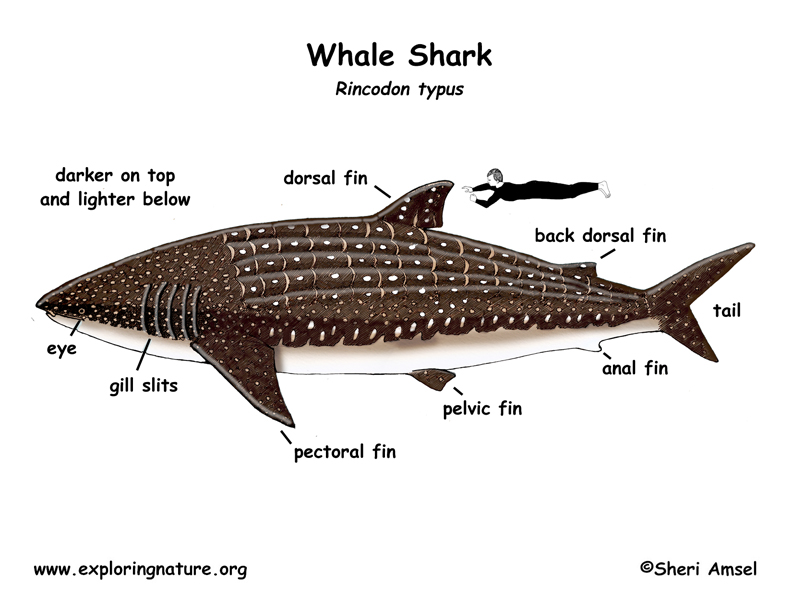

They are found throughout the Atlantic and Pacific Ocean.
They live in warm (tropical) and mild (subtropical) oceans, along coastlines. They do enter tropical island bays. They are often found feeding on the surface of the water.
They are the largest fish in the world, reaching up to 50-feet long and weighing up to 20 tons (40,000 pounds) Their large bodies come to a point at both ends and are dark colored and covered with lighter spots and stripes. They have a flattened head and small eyes close to the front of their heads.
They swim slowly near the surface of the ocean while they're feeding. They are curious and gentle sharks and let swimmers come up to them in the water.
They feed near the surface of the ocean, eating small sea creatures like, shrimp and krill (crustaceans), plankton, small fish, like sardines and anchovies, and big fish like mackerel.
They bear hundreds of 2-inch long (60cm) live young (ovoviviparous).
Kingdom: Animalia
Phylum: Chordata
Subphylum: Vertebrata
Class: Chondrichthyes/Subclass: Elasmobranchii
Order: Orectolobiformes
Suborder: None
Family: Rhincodontidae
Genus: Rhincodon
Species: R. typus
When you research information you must cite the reference. Citing for websites is different from citing from books, magazines and periodicals. The style of citing shown here is from the MLA Style Citations (Modern Language Association).
When citing a WEBSITE the general format is as follows.
Author Last Name, First Name(s). "Title: Subtitle of Part of Web Page, if appropriate." Title: Subtitle: Section of Page if appropriate. Sponsoring/Publishing Agency, If Given. Additional significant descriptive information. Date of Electronic Publication or other Date, such as Last Updated. Day Month Year of access < URL >.
Amsel, Sheri. "Shark (Whale)" Exploring Nature Educational Resource ©2005-2024. December 14, 2024
< http://www.exploringnature.org/db/view/610 >

